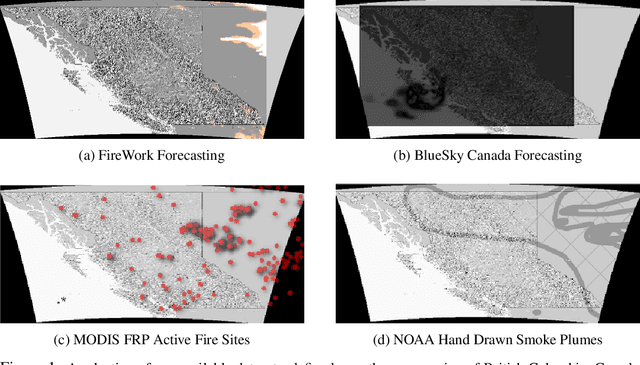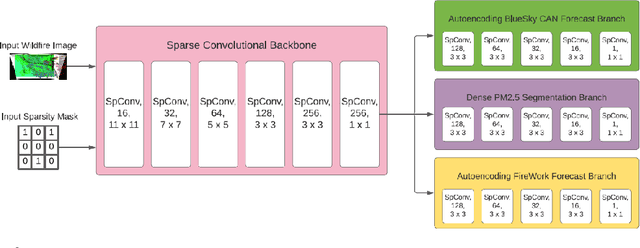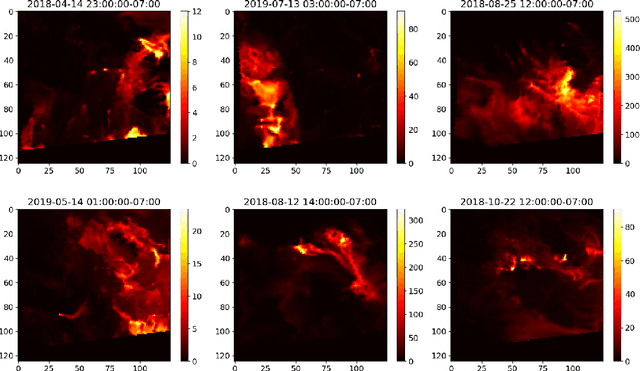Dense Forecasting of Wildfire Smoke Particulate Matter Using Sparsity Invariant Convolutional Neural Networks
Paper and Code
Sep 23, 2020



Accurate forecasts of fine particulate matter (PM 2.5) from wildfire smoke are crucial to safeguarding cardiopulmonary public health. Existing forecasting systems are trained on sparse and inaccurate ground truths, and do not take sufficient advantage of important spatial inductive biases. In this work, we present a convolutional neural network which preserves sparsity invariance throughout, and leverages multitask learning to perform dense forecasts of PM 2.5values. We demonstrate that our model outperforms two existing smoke forecasting systems during the 2018 and 2019 wildfire season in British Columbia, Canada, predicting PM 2.5 at a grid resolution of 10 km, 24 hours in advance with high fidelity. Most interestingly, our model also generalizes to meaningful smoke dispersion patterns despite training with irregularly distributed ground truth PM 2.5 values available in only 0.5% of grid cells.
 Add to Chrome
Add to Chrome Add to Firefox
Add to Firefox Add to Edge
Add to Edge